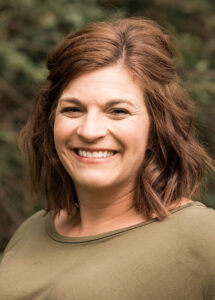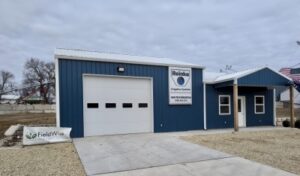
Debra Carlson Ohlde
The North Central Regional Planning Commission (NCRPC) Board of Directors has appointed Debra Carlson Ohlde as its new Executive Director, effective May 1. Read the full news release.
Ohlde is no stranger to the North Central Regional Planning Commission.
She initially joined the staff in 1994 and served in various roles, culminating in the position of Assistant Director, through 2016. After that, Deb stayed connected to community development while operating her consulting company, NEW Heartland Freelance. She also served as the Director of Grower Services for Kansas Corn before rejoining the NCRPC in 2022. She holds a Bachelor of Science degree in Agricultural Economics and a Master’s degree in Public Administration from Kansas State University. Deb and her husband, Tim, are long-time residents of Clyde.
Q&A with the NCRPC Executive Director: Community, Leadership, and the Future of Rural Kansas
For someone unfamiliar with NCRPC or its services, what would you tell them?
Our strength comes from a staff that lives in and loves the region. We understand our member cities and counties, and that impacts how we provide services. We are invested in the region so we strive to provide high quality service and doing so with integrity underpins what we do.”
What excites you most about the future of the NCRPC?
There is always opportunity for communities, businesses and non-profits in rural areas. I’m amazed at the number of young families returning who are choosing this lifestyle and already engaging in community activities and volunteering. We are in such great hands. The NCRPC has the chance to be a key player in solving the challenges we do face and supporting the next generation’s great ideas.
Do you have any advice for communities or businesses in the region or for others working in the field of community development?
Dream big, but validate your idea. I really love the book, “Who Owns The Ice House.” It captures an approach to entrepreneurship that I think works for businesses and communities. In summary, you look to solve a problem, experiment with your solution on a small scale and then just keep growing and improving. People will support/pay for things that are done well. We see impressive projects and business transformations all the time in the region.
What is a leadership lesson you’ve learned that was impactful?
I admire my husband’s approach to life and his career. He always does ALL the research and has a strong knowledge base on any subject he is working on. He is also great at studying all the details. I tend to be bigger picture focused so I appreciate the balance of the detail person. He also represents servant leadership so well. He works very hard, behind the scenes and prefers to deflect the credit to others.
If you weren’t in this career, what would you be doing?
I thought very hard about going to law school. Once in awhile I wish I would have, but I think I would have been most interested in being in a court room and that doesn’t actually happen that much. I also really loved my accounting classes at KSU. But I don’t think I would have enjoyed doing that type of work all the time. A little bit here and there is enough.
In your spare time, what do you enjoy doing the most?
I have always enjoyed reading and still do. I rarely read fiction; it’s usually something self-help, biographical, or work-related. Podcasts are also wonderful because I do drive a fair amount and enjoy walking outside and I like to listen to them rather than music. Over the years, I have enjoyed the different volunteer things I have done – teaching Sunday School, being a 4-H leader, coaching, etc. I can honestly say that I enjoyed my 12 years on our local Board of Education. It is so important to have strong schools in our small towns.
This article appeared in the Quarter 2 2025 NCRPC Newsletter.

 Financial assistance provided through the third year of the NCRPC Housing Initiative enabled the completion of 90 housing rehabilitation projects across six Kansas counties: Logan, Osborne, Ottawa, Phillips, Rawlins, and Sherman.
Financial assistance provided through the third year of the NCRPC Housing Initiative enabled the completion of 90 housing rehabilitation projects across six Kansas counties: Logan, Osborne, Ottawa, Phillips, Rawlins, and Sherman. Helping to reduce energy costs for rural small businesses and agricultural producers is one of the goals of the staff at the Kansas Energy Program, housed within the K-State Engineering Extension Department.
Helping to reduce energy costs for rural small businesses and agricultural producers is one of the goals of the staff at the Kansas Energy Program, housed within the K-State Engineering Extension Department. The newly established NCRPC endowment, officially named the Todd Tuttle Fund for Arts and Science, received a small boost through its participation in a one-day giving event held in April.
The newly established NCRPC endowment, officially named the Todd Tuttle Fund for Arts and Science, received a small boost through its participation in a one-day giving event held in April.



 The NCRPC is excited to announce the establishment of a new endowment fund dedicated to supporting science education and the arts in the area.
The NCRPC is excited to announce the establishment of a new endowment fund dedicated to supporting science education and the arts in the area.